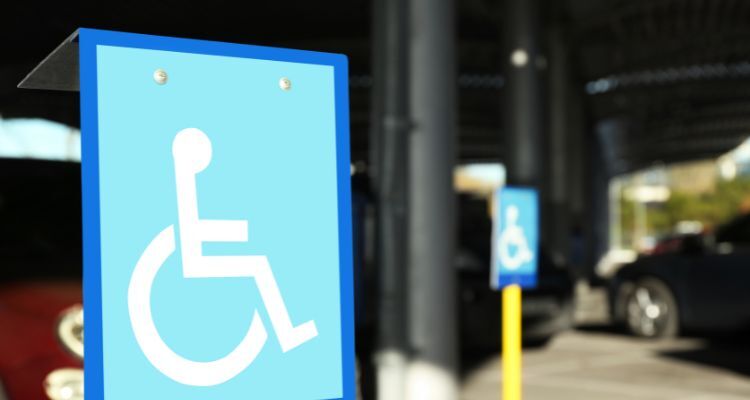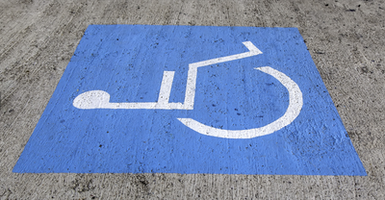
How a Disabled Permit Can Improve Quality of Life for CAD Patients
Coronary Artery Disease (CAD) is a chronic condition that affects millions of individuals worldwide. Characterized by the narrowing or blockage of coronary arteries due to the buildup of plaque, CAD can lead to serious cardiovascular issues, including heart attacks. Managing this condition involves a combination of medication, lifestyle changes, and in some cases, surgical interventions. However, beyond the medical treatment, many CAD patients struggle with mobility and the energy to manage daily activities.
One essential tool for improving quality of life for CAD patients is a disabled parking permit, which allows for priority parking and accessible spaces. While this might seem like a small accommodation, the benefits of having a disability tag go far beyond convenience. In this article, we will explore the various ways in which a disability tag can significantly improve the quality of life for those living with CAD.
Understanding Coronary Artery Disease (CAD)
Before delving into the impact of a disability tag, it's essential to understand the physical challenges CAD patients face. Coronary Artery Disease is caused by the accumulation of fatty deposits in the coronary arteries, limiting blood flow to the heart. This restricted blood flow can lead to symptoms such as:
- Chest Pain (Angina): Pain or discomfort in the chest, often triggered by physical exertion or stress.
- Shortness of Breath: Difficulty breathing, especially during physical activities like walking or climbing stairs.
- Fatigue: Persistent tiredness due to the heart's reduced ability to pump blood efficiently.
- Heart Attacks: In severe cases, CAD can result in a complete blockage of the coronary arteries, leading to a heart attack.
For many CAD patients, these symptoms make it difficult to engage in daily activities, particularly those that require physical effort. Tasks as simple as walking from a parking lot to a grocery store can become overwhelming, leading to stress and anxiety. A disability tag can alleviate these burdens by providing access to parking spaces closer to entrances, reducing the physical strain and improving overall quality of life.
The Purpose of a Disabled Permit
A disability tag, also known as a placard or permit, is issued to individuals with qualifying disabilities, allowing them to park in designated accessible spaces. These parking spots are typically located closer to building entrances, are wider to accommodate mobility aids, and are designed to reduce the distance individuals need to walk.
For patients with CAD, these accommodations are invaluable, as they can significantly reduce the amount of physical exertion required to perform everyday tasks. The benefits of having a disability tag extend to various aspects of life, from daily errands to social outings and medical appointments.
Key Benefits of a Disabled Permit for CAD Patients
1. Enhanced Accessibility to Essential Services
One of the most immediate benefits of a disability parking tag for CAD patients is enhanced accessibility to essential services such as medical facilities, pharmacies, grocery stores, and other critical locations. With a disability tag, patients can park in designated accessible parking spaces that are closer to entrances, minimizing the distance they need to walk and reducing physical strain.
Examples of Accessibility Benefits:
- Medical Appointments: Regular medical check-ups and appointments are essential for CAD management. A disability tag ensures that patients can park close to the entrance of hospitals, clinics, or doctors' offices, making it easier and less exhausting to attend these necessary appointments.
- Pharmacies and Grocery Stores: For CAD patients who need to pick up medications or buy groceries, a disability tag allows them to park closer to the entrance of these establishments, reducing the effort required to carry bags or supplies back to their vehicles.
- Workplaces and Public Buildings: CAD patients who continue to work or frequently visit public buildings for various reasons can benefit from designated parking spots that reduce the distance between their vehicle and the building, minimizing fatigue and physical stress.
2. Reduced Physical Exertion and Fatigue
For CAD patients, managing energy levels and avoiding unnecessary physical exertion is crucial. Overexertion can lead to chest pain, shortness of breath, dizziness, or even a heart attack. By allowing patients to park closer to their destinations, a disability tag helps reduce the physical exertion required to navigate parking lots or walk long distances.
How Reduced Exertion Improves Quality of Life:
- Prevention of Overexertion: Shorter walking distances mean that CAD patients are less likely to overexert themselves, preventing symptoms such as angina and shortness of breath.
- Energy Conservation: Conserving energy is essential for those with CAD, especially for individuals who need to balance work, family responsibilities, and self-care. By minimizing walking distances, a disability tag allows patients to save energy for other important activities.
- Reduced Need for Assistance: Patients who use a disability tag may require less assistance from caregivers or family members for mobility, promoting a sense of independence and self-reliance.
3. Improved Safety and Emergency Access
Safety is a significant concern for CAD patients, especially those who may experience sudden symptoms such as chest pain or shortness of breath. A disability parking tag can provide a critical safety benefit by ensuring quick and easy access to one's vehicle in the event of a medical emergency.
Ways Disability Tags Improve Safety:
- Quick Access to Vehicles: In an emergency situation where a CAD patient needs to reach a hospital or medical facility quickly, having a disability parking tag ensures that their vehicle is easily accessible and can be reached without delay.
- Proximity to Assistance: Accessible parking spaces are often located near building entrances, security personnel, or areas with higher foot traffic. This proximity can be crucial in emergencies, allowing patients to receive help or call for assistance if needed.
4. Promoting Independence and Social Engagement
Living with CAD can often lead to feelings of dependence on others, as mobility limitations can make it challenging to participate in social activities or complete daily tasks independently. A disability parking tag can empower CAD patients by enabling them to maintain their independence and engage more fully in their communities.
Impact on Independence and Social Engagement:
- Increased Participation in Social Activities: With easier access to parking and reduced physical barriers, CAD patients are more likely to participate in social events, community activities, and family gatherings without the fear of overexertion or needing assistance.
- Confidence in Mobility: Knowing that they have access to designated parking can boost confidence for CAD patients, encouraging them to go out more frequently and engage in activities they enjoy.
- Reduced Reliance on Caregivers: By minimizing the need for mobility assistance, a disability tag allows CAD patients to maintain greater control over their daily routines and reduce reliance on caregivers.
5. Access to Programs and Accommodations for Disability Tag Holders
Many cities, counties, and organizations offer programs, accommodations, and services for disability tag holders, such as reduced parking fees, extended parking durations, and priority access. These programs can provide additional benefits and support for CAD patients.
Examples of Programs and Accommodations:
- Reduced or Waived Parking Fees: Some municipalities offer reduced or waived parking fees for disability tag holders, which can help CAD patients manage costs associated with frequent medical visits or other appointments.
- Extended Parking Durations: In some areas, disability tag holders may be allowed to park for longer periods, providing flexibility for those who need more time to complete tasks or attend appointments.
- Priority Access to Services: Some facilities may offer priority access to certain services or programs for disability tag holders, reducing wait times and making the experience more convenient for CAD patients.
6. Peace of Mind for CAD Patients and Caregivers
Living with a chronic condition like CAD can be mentally and emotionally taxing. Managing the daily uncertainty of symptoms, mobility challenges, and potential emergencies can create a significant mental burden. A disability parking tag can provide peace of mind for both CAD patients and their caregivers by reducing some of these uncertainties and providing more predictable access to parking.
Ways Disability Tags Offer Peace of Mind:
- Predictable Parking Options: Knowing that accessible parking will be available close to the entrance of important destinations reduces the anxiety and stress of planning trips or outings.
- Reduced Anxiety During Emergencies: Having a designated parking spot that is easy to access can alleviate concerns about finding parking during emergencies or high-traffic situations.
- Security and Safety Considerations: Many accessible parking spaces are located in well-lit and more secure areas, offering additional peace of mind for patients and caregivers who may be concerned about personal safety.
7. Legal Protections and Advocacy Opportunities
Disability tag holders are protected under laws such as the Americans with Disabilities Act (ADA) and state-specific regulations that prohibit discrimination and ensure access to designated parking spaces. For CAD patients, these legal protections provide an essential layer of security and advocacy opportunities to address any issues or barriers they may encounter.
Legal Protections and Their Impact:
- Protection from Discrimination: CAD patients with a disability tag are legally protected from discrimination or harassment related to their use of accessible parking.
- Enforcement of Accessibility Laws: Legal frameworks provide avenues for reporting violations or non-compliance with accessibility standards, ensuring that CAD patients can assert their rights and advocate for accessible environments.
- Support from Advocacy Organizations: Many disability rights organizations offer support, resources, and advocacy for individuals facing challenges in accessing or using their disability tags, providing a network of support for CAD patients.
8. Encouraging Physical Activity in a Safe and Controlled Manner
While overexertion can be dangerous for CAD patients, controlled and moderate physical activity is often recommended as part of a comprehensive cardiac rehabilitation plan. A disability tag can help CAD patients safely engage in physical activity by providing a "home base" from which they can control the distance and intensity of their walking or exercise.
Encouraging Safe Physical Activity:
- Structured Walks Near Accessible Parking: With a disability tag, CAD patients can park closer to walking trails, parks, or safe walking routes where they can engage in light exercise without having to worry about long walks back to their vehicles.
- Combination of Rest and Activity: Disability tags enable CAD patients to park close enough to rest areas or their vehicles, allowing them to rest as needed and avoid overexertion while still benefiting from moderate physical activity.
The Application Process for a Disabled Parking Permit with CAD
Obtaining a disabled permit for CAD patients involves a straightforward process that varies slightly depending on the country, state, or region. Here is a general overview of the steps involved:
1. Eligibility Criteria
Each jurisdiction has its own set of eligibility criteria for obtaining a disability tag. For CAD patients, the criteria often involve providing medical documentation that outlines the severity of the condition and the need for accessible parking. It is essential to consult the local Department of Motor Vehicles (DMV) or relevant authority to understand the specific requirements and guidelines.
2. Medical Certification
A critical step in the application process is obtaining medical certification from a handicapMD healthcare professional. The physician must fill out a form provided by the DMV or relevant authority, detailing the patient’s medical condition, diagnosis, and the need for a disability tag. This form serves as proof of eligibility and is typically required for both temporary and permanent disability tags.
3. Completing the Application Form
Once the medical certification is obtained, the applicant must complete the disability tag application form. This form usually includes personal information, medical details, and consent for verification by the issuing authority. Some jurisdictions may also require a small processing fee, especially for permanent tags.
4. Submitting the Application
The completed application, along with the medical certification and any required fees, must be submitted to the local DMV or relevant issuing authority. Applications can be submitted in person, by mail, or online, depending on the jurisdiction. It is essential to check the specific submission requirements to avoid delays in processing.
5. Receiving the Disability Tag
Upon approval, the applicant will receive a disability tag in the form of a placard or license plate. The tag is typically valid for a specific period, after which it must be renewed. Temporary disability tags are usually valid for up to six months, while permanent tags may require renewal every few years. It is crucial to adhere to the renewal guidelines to continue benefiting from accessible parking.
Challenges and Considerations for CAD Patients with Disabled Parking Permits
While disability parking tags offer many benefits for CAD patients, there are also challenges and considerations to be aware of:
- Stigma and Misunderstanding: Because CAD is an "invisible" disability, some CAD patients may face misunderstanding or stigma from the public when using accessible parking spaces. Education and advocacy are important to increase awareness and understanding of invisible disabilities.
- Availability of Accessible Parking: In some areas, accessible parking spaces may be limited or frequently occupied, making it difficult for CAD patients to find parking when needed.
- Renewal and Verification Processes: Disability tags often require periodic renewal and verification of medical conditions, which can be time-consuming and require additional medical documentation.
Overcoming the Stigma of Using a Disabled Permit
Despite the clear benefits of using a disability tag, some CAD patients may feel hesitant to apply for one due to stigma. The visible use of a disability tag can sometimes lead to misconceptions or judgments from others who may not understand the invisible nature of CAD. Unlike physical disabilities, CAD symptoms are not always immediately apparent, which can lead to feelings of guilt or embarrassment about using a disability tag.
Education and Advocacy
Overcoming this stigma requires education and advocacy, both on a personal and societal level. CAD patients should feel empowered to prioritize their health and well-being without fear of judgment. Educating friends, family, and the broader community about the realities of living with CAD can help reduce the stigma associated with using a disability tag. Additionally, advocacy organizations play a critical role in raising awareness about invisible disabilities like CAD, helping to create a more inclusive and understanding society.
Conclusion
For individuals living with Coronary Artery Disease, a disability tag offers more than just convenient parking—it provides a tangible improvement in daily life. From reducing physical strain and stress to enhancing independence and emotional well-being, the benefits of having a disability tag are wide-ranging. By making public spaces more accessible, disability tags allow CAD patients to maintain their quality of life, participate in social activities, and manage their condition with greater ease.
For a comprehensive guide on applying for a disability tag with CAD, please refer to our main article Disabled Permit for Coronary Artery Disease (CAD): A Comprehensive Guide.
References
- American Heart Association. (n.d.). Understanding Coronary Artery Disease (CAD).
- Americans with Disabilities Act (ADA). (n.d.). ADA Overview and Accessibility Guidelines.
- Invisible Disabilities Association. (n.d.). Invisible Disabilities and Disability Tags.
- National Institute on Aging. (n.d.). Managing Mobility Issues with Chronic Conditions.
- U.S. Department of Transportation. (n.d.). Accessible Parking and Disability Rights.
- American Association of Retired Persons (AARP). (n.d.). Accessibility and Independence for Older Adults with Disabilities.
- Mayo Clinic. (n.d.). Exercise and Physical Activity for Heart Disease Patients.
These references offer further reading and resources for CAD patients considering the benefits of obtaining a disability parking tag.
.png)






